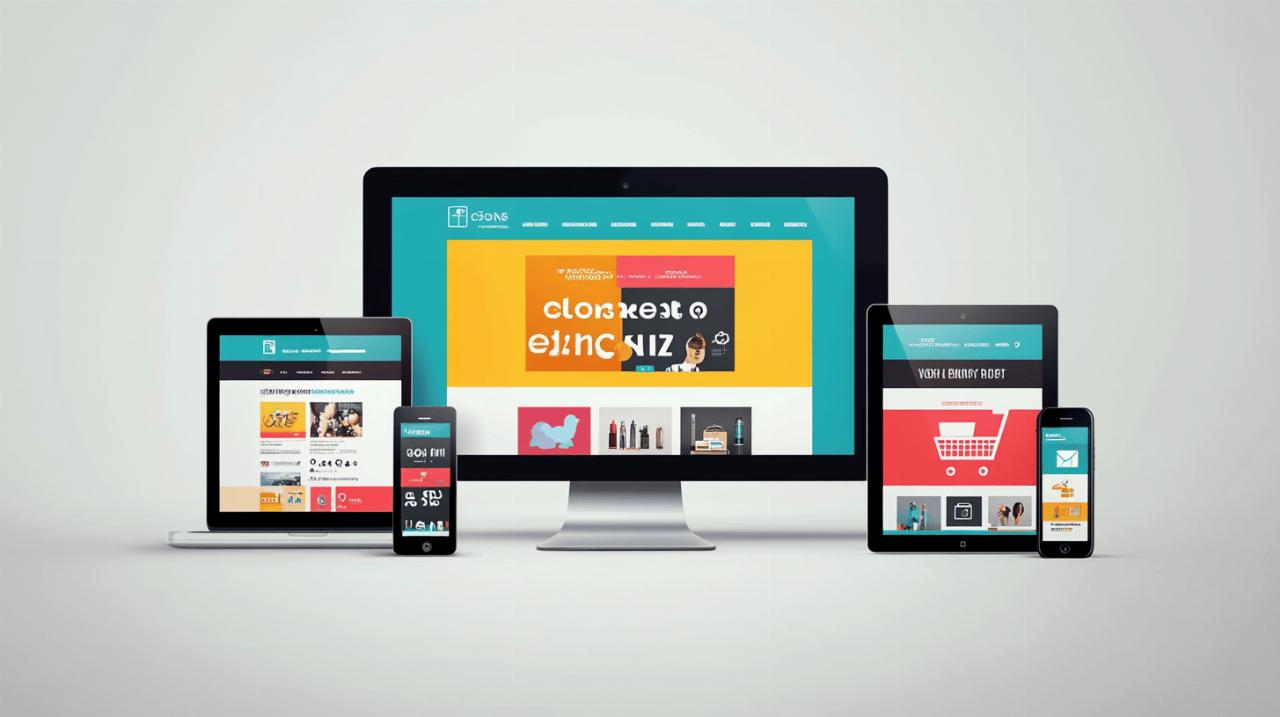Revamping an e-commerce website is no longer simply about updating the look of a digital storefront. It is about transforming the entire shopping experience to meet the evolving expectations of modern consumers. With online sales now representing a significant portion of retail transactions in the United Kingdom, businesses must embrace strategies that prioritise tailored personalisation. This approach not only enhances customer satisfaction but also drives meaningful revenue growth and strengthens brand loyalty. The following tips offer a roadmap for successfully overhauling your e-commerce platform whilst keeping customer experience at the forefront.
Enhancing user experience through intuitive navigation and design
The foundation of any successful e-commerce transformation lies in creating an environment where customers feel comfortable and confident navigating your site. Intuitive design ensures that visitors can find what they are looking for without frustration, which directly impacts conversion rates. A well-structured layout, clear categorisation, and accessible search functionality are essential elements that guide shoppers effortlessly through their journey. When users encounter a seamless interface, they are more likely to explore additional products and complete their purchases, ultimately boosting overall sales performance.
Creating seamless customer journeys across your platform
A seamless customer journey is one where every interaction feels natural and purposeful. From the moment a visitor lands on your homepage to the final checkout confirmation, each step should be designed with their needs in mind. Personalised product recommendations play a crucial role in this process, as they help shoppers discover items that align with their preferences and past behaviour. By leveraging customer data intelligently, you can present relevant suggestions that enhance the shopping experience and encourage repeat visits. Additionally, simplifying the checkout process by reducing unnecessary steps and offering multiple payment options can significantly decrease cart abandonment rates and improve overall satisfaction.
Optimising mobile responsiveness for modern shoppers
With a substantial proportion of UK adults now using smartphones to access the internet, mobile-first design has become a non-negotiable aspect of e-commerce success. A platform that performs flawlessly on mobile devices ensures that customers can browse, compare, and purchase products with ease, regardless of their location or device. Fast loading times are particularly critical, as research indicates that a delay of just a few seconds can lead to a significant drop in user engagement. Optimising page speed, ensuring responsive layouts, and testing functionality across various screen sizes are all vital steps in catering to the mobile-savvy shopper. This focus on mobile responsiveness not only improves user experience but also positively influences search engine rankings, further amplifying your site's visibility.
Leveraging data analytics to drive personalised shopping experiences
Data analytics serves as the backbone of effective personalisation strategies in e-commerce. By understanding customer behaviour and preferences, businesses can tailor their offerings to meet individual needs and expectations. This data-driven approach allows you to move beyond generic marketing tactics and deliver experiences that resonate on a personal level. The ability to analyse and act upon customer data is what distinguishes leading e-commerce platforms from those that struggle to maintain relevance in a competitive market.
Understanding customer behaviour through comprehensive data analysis
Gaining deep insights into how customers interact with your platform is essential for crafting meaningful personalisation strategies. Tracking metrics such as browsing patterns, time spent on specific pages, and purchase history provides valuable information about what drives decision-making. Segmentation is a powerful technique that enables you to group customers based on shared characteristics or behaviours, allowing for more targeted messaging and offers. For instance, identifying a segment of shoppers who frequently abandon their carts presents an opportunity to implement automated flows that gently remind them of their pending purchases. This kind of strategic intervention, supported by robust data analysis, can recover a notable portion of lost sales and enhance overall conversion rates.
Implementing targeted recommendations based on purchase patterns
Personalised product recommendations have emerged as one of the most effective tools for increasing both customer engagement and average order value. By analysing past purchases and browsing behaviour, you can present shoppers with items that genuinely interest them, thereby creating a more satisfying shopping experience. Machine learning algorithms can refine these recommendations over time, ensuring that they remain relevant and timely. Email marketing also benefits greatly from this approach, as personalised messages that reflect individual preferences tend to generate significantly higher open and click-through rates. The integration of these targeted recommendations across various touchpoints, from homepage displays to post-purchase emails, creates a cohesive and engaging customer journey that encourages loyalty and repeat business.
Modernising visual identity whilst preserving brand authenticity
 A successful redesign strikes a delicate balance between embracing contemporary design trends and maintaining the core elements that define your brand. Visual identity is more than just aesthetics; it is a reflection of your values, personality, and the promise you make to your customers. Updating your platform's appearance should enhance recognition and trust rather than alienate existing customers who have grown familiar with your brand's look and feel. This requires careful consideration of colour schemes, typography, imagery, and overall layout to ensure that the new design feels fresh yet authentic.
A successful redesign strikes a delicate balance between embracing contemporary design trends and maintaining the core elements that define your brand. Visual identity is more than just aesthetics; it is a reflection of your values, personality, and the promise you make to your customers. Updating your platform's appearance should enhance recognition and trust rather than alienate existing customers who have grown familiar with your brand's look and feel. This requires careful consideration of colour schemes, typography, imagery, and overall layout to ensure that the new design feels fresh yet authentic.
Incorporating contemporary design trends that resonate with your audience
Design trends evolve rapidly, and staying current can help your platform appear modern and relevant. However, it is important to adopt trends selectively, choosing those that align with your brand identity and target audience. Clean, minimalist layouts with ample white space can enhance readability and focus attention on key products, whilst high-quality imagery and engaging visuals can evoke emotions and create memorable impressions. Interactive elements, such as user-generated content and social media integrations, can also add a dynamic dimension to your site, fostering a sense of community and encouraging customer participation. By thoughtfully incorporating these contemporary elements, you can create a visually appealing platform that captures attention without sacrificing usability or brand integrity.
Balancing fresh aesthetics with established brand recognition
Whilst innovation is essential, it should not come at the expense of brand recognition. Long-standing customers have developed an emotional connection with your brand, and drastic changes can lead to confusion or even alienation. The key is to evolve your visual identity gradually, introducing updates that feel natural and intentional. Retaining signature colours, logos, and design motifs can provide continuity and reassurance, even as you refresh other elements. This approach allows you to modernise your platform whilst preserving the trust and loyalty that your brand has built over time. Regular feedback from customers during the redesign process can also help ensure that changes are well-received and align with their expectations.
Developing strategic marketing approaches for your redesigned platform
Launching a revamped e-commerce site is only the beginning; effective marketing strategies are essential to maximise the impact of your transformation. Communicating the improvements you have made and demonstrating their benefits to both new and existing customers is crucial for driving traffic and conversions. A comprehensive marketing plan should encompass a variety of channels and tactics, from paid social advertising to email campaigns, ensuring that your message reaches a broad and diverse audience.
Communicating Site Improvements to Engage Both New and Loyal Customers
Transparency and enthusiasm are key when announcing your site's redesign. Highlighting the enhancements you have made, such as improved navigation, personalised recommendations, and faster checkout processes, helps customers understand the value of the changes. Email marketing is particularly effective for reaching your existing customer base, as personalised messages can re-engage users who may have drifted away. Social media platforms also offer opportunities to showcase your updated site through engaging content, such as behind-the-scenes looks at the redesign process or customer testimonials. Paid advertising on platforms like Meta, TikTok, and Pinterest can expand your reach to new audiences, especially when campaigns feature user-generated content that feels authentic and relatable. Influencer and affiliate partnerships can further amplify your message, leveraging trusted voices to build credibility and drive conversions.
Monitoring performance metrics and refining strategies post-launch
The work does not stop once your redesigned site goes live. Continuous monitoring of performance metrics is essential to understand how customers are interacting with the new platform and where further improvements can be made. Key indicators such as conversion rates, average order value, and customer lifetime value provide insights into the effectiveness of your redesign and marketing efforts. Tools that facilitate experimentation and segmentation allow you to test different approaches and refine your strategies based on real-world data. This iterative process of optimisation ensures that your platform remains responsive to customer needs and market trends. Investing in robust analytics and being willing to adapt based on feedback and performance data are critical components of long-term success. By maintaining a focus on continuous improvement and customer-centric innovation, you can ensure that your e-commerce transformation delivers sustained benefits and positions your business for future growth.
